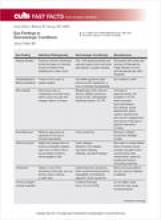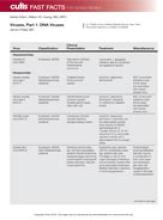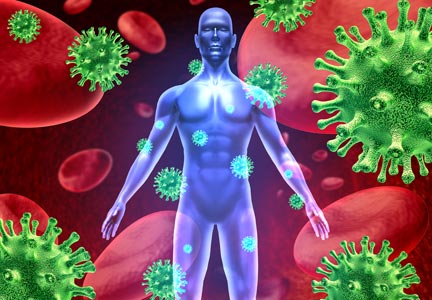User login
Chemical Peels
Review the PDF of the fact sheet on Chemical Peels with board-relevant, easy-to-review material. This fact sheet will review the use of chemical peels for dermatologic indications.
Practice Questions
1. Which peel requires neutralization?
a. Baker-Gordon
b. glycolic acid
c. Jessner
d. salicylic acid
e. trichloroacetic acid
2. Which peel contains resorcinol?
a. Baker-Gordon
b. glycolic acid
c. Jessner
d. salicylic acid
e. trichloroacetic acid
3. Which peel would be the best treatment of severe actinic photodamage?
a. Baker-Gordon
b. glycolic acid
c. Jessner
d. salicylic acid
e. trichloroacetic acid
4. Which peel would not be indicated for treatment of melasma in a patient with Fitzpatrick skin type IV?
a. Baker-Gordon
b. glycolic acid
c. Jessner
d. salicylic acid
e. trichloroacetic acid
5. Which peel is a β-hydroxy acid?
a. Baker-Gordon
b. glycolic acid
c. Jessner
d. salicylic acid
e. trichloroacetic acid
Answers to practice questions provided on next page
Practice Question Answers
1. Which peel requires neutralization?
a. Baker-Gordon
b. glycolic acid
c. Jessner
d. salicylic acid
e. trichloroacetic acid
2. Which peel contains resorcinol?
a. Baker-Gordon
b. glycolic acid
c. Jessner
d. salicylic acid
e. trichloroacetic acid
3. Which peel would be the best treatment of severe actinic photodamage?
a. Baker-Gordon
b. glycolic acid
c. Jessner
d. salicylic acid
e. trichloroacetic acid
4. Which peel would not be indicated for treatment of melasma in a patient with Fitzpatrick skin type IV?
a. Baker-Gordon
b. glycolic acid
c. Jessner
d. salicylic acid
e. trichloroacetic acid
5. Which peel is a β-hydroxy acid?
a. Baker-Gordon
b. glycolic acid
c. Jessner
d. salicylic acid
e. trichloroacetic acid
Review the PDF of the fact sheet on Chemical Peels with board-relevant, easy-to-review material. This fact sheet will review the use of chemical peels for dermatologic indications.
Practice Questions
1. Which peel requires neutralization?
a. Baker-Gordon
b. glycolic acid
c. Jessner
d. salicylic acid
e. trichloroacetic acid
2. Which peel contains resorcinol?
a. Baker-Gordon
b. glycolic acid
c. Jessner
d. salicylic acid
e. trichloroacetic acid
3. Which peel would be the best treatment of severe actinic photodamage?
a. Baker-Gordon
b. glycolic acid
c. Jessner
d. salicylic acid
e. trichloroacetic acid
4. Which peel would not be indicated for treatment of melasma in a patient with Fitzpatrick skin type IV?
a. Baker-Gordon
b. glycolic acid
c. Jessner
d. salicylic acid
e. trichloroacetic acid
5. Which peel is a β-hydroxy acid?
a. Baker-Gordon
b. glycolic acid
c. Jessner
d. salicylic acid
e. trichloroacetic acid
Answers to practice questions provided on next page
Practice Question Answers
1. Which peel requires neutralization?
a. Baker-Gordon
b. glycolic acid
c. Jessner
d. salicylic acid
e. trichloroacetic acid
2. Which peel contains resorcinol?
a. Baker-Gordon
b. glycolic acid
c. Jessner
d. salicylic acid
e. trichloroacetic acid
3. Which peel would be the best treatment of severe actinic photodamage?
a. Baker-Gordon
b. glycolic acid
c. Jessner
d. salicylic acid
e. trichloroacetic acid
4. Which peel would not be indicated for treatment of melasma in a patient with Fitzpatrick skin type IV?
a. Baker-Gordon
b. glycolic acid
c. Jessner
d. salicylic acid
e. trichloroacetic acid
5. Which peel is a β-hydroxy acid?
a. Baker-Gordon
b. glycolic acid
c. Jessner
d. salicylic acid
e. trichloroacetic acid
Review the PDF of the fact sheet on Chemical Peels with board-relevant, easy-to-review material. This fact sheet will review the use of chemical peels for dermatologic indications.
Practice Questions
1. Which peel requires neutralization?
a. Baker-Gordon
b. glycolic acid
c. Jessner
d. salicylic acid
e. trichloroacetic acid
2. Which peel contains resorcinol?
a. Baker-Gordon
b. glycolic acid
c. Jessner
d. salicylic acid
e. trichloroacetic acid
3. Which peel would be the best treatment of severe actinic photodamage?
a. Baker-Gordon
b. glycolic acid
c. Jessner
d. salicylic acid
e. trichloroacetic acid
4. Which peel would not be indicated for treatment of melasma in a patient with Fitzpatrick skin type IV?
a. Baker-Gordon
b. glycolic acid
c. Jessner
d. salicylic acid
e. trichloroacetic acid
5. Which peel is a β-hydroxy acid?
a. Baker-Gordon
b. glycolic acid
c. Jessner
d. salicylic acid
e. trichloroacetic acid
Answers to practice questions provided on next page
Practice Question Answers
1. Which peel requires neutralization?
a. Baker-Gordon
b. glycolic acid
c. Jessner
d. salicylic acid
e. trichloroacetic acid
2. Which peel contains resorcinol?
a. Baker-Gordon
b. glycolic acid
c. Jessner
d. salicylic acid
e. trichloroacetic acid
3. Which peel would be the best treatment of severe actinic photodamage?
a. Baker-Gordon
b. glycolic acid
c. Jessner
d. salicylic acid
e. trichloroacetic acid
4. Which peel would not be indicated for treatment of melasma in a patient with Fitzpatrick skin type IV?
a. Baker-Gordon
b. glycolic acid
c. Jessner
d. salicylic acid
e. trichloroacetic acid
5. Which peel is a β-hydroxy acid?
a. Baker-Gordon
b. glycolic acid
c. Jessner
d. salicylic acid
e. trichloroacetic acid
Eye Findings in Dermatologic Conditions
Review the PDF of the fact sheet on eye findings in dermatologic conditions with board-relevant, easy-to-review material. This month's fact sheet will review ophthalmologic findings associated with inherited dermatologic conditions.
Practice Questions
1. Which type of EDS is most characteristically associated with blue sclerae and globe rupture?
a. arthrochalasia
b. classical
c. dermatosparaxis
d. hypermobility
e. kyphoscoliosis
2. Ankyloblepharon may be associated with mutation of which gene?
a. fibrillin 1
b. LMX1B
c. NF1
d. p53
e. p63
3. Which is a characteristic ocular tumor in patients with tuberous sclerosis complex?
a. congenital hypertrophy of retinal pigment epithelium
b. phakoma
c. pigmented iris hamartoma
d. pinguecula
e. pterygium
4. Which syndrome is not associated with blue sclerae?
a. EDS type 6
b. lipoid proteinosis
c. Marfan syndrome
d. osteogenesis imperfecta type II
e. pseudoxanthoma elasticum
5. Which term describes white spots at the periphery of the iris?
a. Brushfield spots
b. coloboma
c. Kayser-Fleischer rings
d. Lester iris
e. Lisch nodules
Answers to practice questions provided on next page
Practice Question Answers
1. Which type of EDS is most characteristically associated with blue sclerae and globe rupture?
a. arthrochalasia
b. classical
c. dermatosparaxis
d. hypermobility
e. kyphoscoliosis
2. Ankyloblepharon may be associated with mutation of which gene?
a. fibrillin 1
b. LMX1B
c. NF1
d. p53
e. p63
3. Which is a characteristic ocular tumor in patients with tuberous sclerosis complex?
a. congenital hypertrophy of retinal pigment epithelium
b. phakoma
c. pigmented iris hamartoma
d. pinguecula
e. pterygium
4. Which syndrome is not associated with blue sclerae?
a. EDS type 6
b. lipoid proteinosis
c. Marfan syndrome
d. osteogenesis imperfecta type II
e. pseudoxanthoma elasticum
5. Which term describes white spots at the periphery of the iris?
a. Brushfield spots
b. coloboma
c. Kayser-Fleischer rings
d. Lester iris
e. Lisch nodules
Review the PDF of the fact sheet on eye findings in dermatologic conditions with board-relevant, easy-to-review material. This month's fact sheet will review ophthalmologic findings associated with inherited dermatologic conditions.
Practice Questions
1. Which type of EDS is most characteristically associated with blue sclerae and globe rupture?
a. arthrochalasia
b. classical
c. dermatosparaxis
d. hypermobility
e. kyphoscoliosis
2. Ankyloblepharon may be associated with mutation of which gene?
a. fibrillin 1
b. LMX1B
c. NF1
d. p53
e. p63
3. Which is a characteristic ocular tumor in patients with tuberous sclerosis complex?
a. congenital hypertrophy of retinal pigment epithelium
b. phakoma
c. pigmented iris hamartoma
d. pinguecula
e. pterygium
4. Which syndrome is not associated with blue sclerae?
a. EDS type 6
b. lipoid proteinosis
c. Marfan syndrome
d. osteogenesis imperfecta type II
e. pseudoxanthoma elasticum
5. Which term describes white spots at the periphery of the iris?
a. Brushfield spots
b. coloboma
c. Kayser-Fleischer rings
d. Lester iris
e. Lisch nodules
Answers to practice questions provided on next page
Practice Question Answers
1. Which type of EDS is most characteristically associated with blue sclerae and globe rupture?
a. arthrochalasia
b. classical
c. dermatosparaxis
d. hypermobility
e. kyphoscoliosis
2. Ankyloblepharon may be associated with mutation of which gene?
a. fibrillin 1
b. LMX1B
c. NF1
d. p53
e. p63
3. Which is a characteristic ocular tumor in patients with tuberous sclerosis complex?
a. congenital hypertrophy of retinal pigment epithelium
b. phakoma
c. pigmented iris hamartoma
d. pinguecula
e. pterygium
4. Which syndrome is not associated with blue sclerae?
a. EDS type 6
b. lipoid proteinosis
c. Marfan syndrome
d. osteogenesis imperfecta type II
e. pseudoxanthoma elasticum
5. Which term describes white spots at the periphery of the iris?
a. Brushfield spots
b. coloboma
c. Kayser-Fleischer rings
d. Lester iris
e. Lisch nodules
Review the PDF of the fact sheet on eye findings in dermatologic conditions with board-relevant, easy-to-review material. This month's fact sheet will review ophthalmologic findings associated with inherited dermatologic conditions.
Practice Questions
1. Which type of EDS is most characteristically associated with blue sclerae and globe rupture?
a. arthrochalasia
b. classical
c. dermatosparaxis
d. hypermobility
e. kyphoscoliosis
2. Ankyloblepharon may be associated with mutation of which gene?
a. fibrillin 1
b. LMX1B
c. NF1
d. p53
e. p63
3. Which is a characteristic ocular tumor in patients with tuberous sclerosis complex?
a. congenital hypertrophy of retinal pigment epithelium
b. phakoma
c. pigmented iris hamartoma
d. pinguecula
e. pterygium
4. Which syndrome is not associated with blue sclerae?
a. EDS type 6
b. lipoid proteinosis
c. Marfan syndrome
d. osteogenesis imperfecta type II
e. pseudoxanthoma elasticum
5. Which term describes white spots at the periphery of the iris?
a. Brushfield spots
b. coloboma
c. Kayser-Fleischer rings
d. Lester iris
e. Lisch nodules
Answers to practice questions provided on next page
Practice Question Answers
1. Which type of EDS is most characteristically associated with blue sclerae and globe rupture?
a. arthrochalasia
b. classical
c. dermatosparaxis
d. hypermobility
e. kyphoscoliosis
2. Ankyloblepharon may be associated with mutation of which gene?
a. fibrillin 1
b. LMX1B
c. NF1
d. p53
e. p63
3. Which is a characteristic ocular tumor in patients with tuberous sclerosis complex?
a. congenital hypertrophy of retinal pigment epithelium
b. phakoma
c. pigmented iris hamartoma
d. pinguecula
e. pterygium
4. Which syndrome is not associated with blue sclerae?
a. EDS type 6
b. lipoid proteinosis
c. Marfan syndrome
d. osteogenesis imperfecta type II
e. pseudoxanthoma elasticum
5. Which term describes white spots at the periphery of the iris?
a. Brushfield spots
b. coloboma
c. Kayser-Fleischer rings
d. Lester iris
e. Lisch nodules
Viruses, Part 1: DNA Viruses
After, test your knowledge by answering the 5 practice questions.
Practice Questions
1. Which human papillomavirus (HPV) subtype causes epidermodysplasia verruciformis?
a. HPV-1
b. HPV-3
c. HPV-7
d. HPV-8
e. HPV-13
2. Which is the appropriate treatment regimen for a patient presenting with the first episode of genital herpes?
a. acyclovir 20 mg/kg intravenously 4 times daily for 10 d
b. famciclovir 125 mg orally twice daily for 5 d
c. human papillomavirus vaccination
d. valacyclovir 1000 mg orally twice daily for 1 d
e. valacyclovir 1000 mg orally twice daily for 10 d
3. Which is the most common congenital viral infection?
a. adeno-associated virus
b. cytomegalovirus
c. Epstein-Barr virus
d. herpes simplex virus type 1
e. varicella-zoster virus
4. Which virus can cause aplastic crisis in patients with thalassemia?
a. hepatitis B virus
b. herpes simplex virus
c. human papillomavirus
d. parvovirus B19
e. variola virus
5. Which herpesvirus belongs to the Gammaherpesvirinae subfamily?
a. HHV-3
b. HHV-5
c. HHV-6
d. HHV-7
e. HHV-8
The answers appear on the next page.
Practice Question Answers
1. Which human papillomavirus (HPV) subtype causes epidermodysplasia verruciformis?
a. HPV-1
b. HPV-3
c. HPV-7
d. HPV-8
e. HPV-13
2. Which is the appropriate treatment regimen for a patient presenting with the first episode of genital herpes?
a. acyclovir 20 mg/kg intravenously 4 times daily for 10 d
b. famciclovir 125 mg orally twice daily for 5 d
c. human papillomavirus vaccination
d. valacyclovir 1000 mg orally twice daily for 1 d
e. valacyclovir 1000 mg orally twice daily for 10 d
3. Which is the most common congenital viral infection?
a. adeno-associated virus
b. cytomegalovirus
c. Epstein-Barr virus
d. herpes simplex virus type 1
e. varicella-zoster virus
4. Which virus can cause aplastic crisis in patients with thalassemia?
a. hepatitis B virus
b. herpes simplex virus
c. human papillomavirus
d. parvovirus B19
e. variola virus
5. Which herpesvirus belongs to the Gammaherpesvirinae subfamily?
a. HHV-3
b. HHV-5
c. HHV-6
d. HHV-7
e. HHV-8
After, test your knowledge by answering the 5 practice questions.
Practice Questions
1. Which human papillomavirus (HPV) subtype causes epidermodysplasia verruciformis?
a. HPV-1
b. HPV-3
c. HPV-7
d. HPV-8
e. HPV-13
2. Which is the appropriate treatment regimen for a patient presenting with the first episode of genital herpes?
a. acyclovir 20 mg/kg intravenously 4 times daily for 10 d
b. famciclovir 125 mg orally twice daily for 5 d
c. human papillomavirus vaccination
d. valacyclovir 1000 mg orally twice daily for 1 d
e. valacyclovir 1000 mg orally twice daily for 10 d
3. Which is the most common congenital viral infection?
a. adeno-associated virus
b. cytomegalovirus
c. Epstein-Barr virus
d. herpes simplex virus type 1
e. varicella-zoster virus
4. Which virus can cause aplastic crisis in patients with thalassemia?
a. hepatitis B virus
b. herpes simplex virus
c. human papillomavirus
d. parvovirus B19
e. variola virus
5. Which herpesvirus belongs to the Gammaherpesvirinae subfamily?
a. HHV-3
b. HHV-5
c. HHV-6
d. HHV-7
e. HHV-8
The answers appear on the next page.
Practice Question Answers
1. Which human papillomavirus (HPV) subtype causes epidermodysplasia verruciformis?
a. HPV-1
b. HPV-3
c. HPV-7
d. HPV-8
e. HPV-13
2. Which is the appropriate treatment regimen for a patient presenting with the first episode of genital herpes?
a. acyclovir 20 mg/kg intravenously 4 times daily for 10 d
b. famciclovir 125 mg orally twice daily for 5 d
c. human papillomavirus vaccination
d. valacyclovir 1000 mg orally twice daily for 1 d
e. valacyclovir 1000 mg orally twice daily for 10 d
3. Which is the most common congenital viral infection?
a. adeno-associated virus
b. cytomegalovirus
c. Epstein-Barr virus
d. herpes simplex virus type 1
e. varicella-zoster virus
4. Which virus can cause aplastic crisis in patients with thalassemia?
a. hepatitis B virus
b. herpes simplex virus
c. human papillomavirus
d. parvovirus B19
e. variola virus
5. Which herpesvirus belongs to the Gammaherpesvirinae subfamily?
a. HHV-3
b. HHV-5
c. HHV-6
d. HHV-7
e. HHV-8
After, test your knowledge by answering the 5 practice questions.
Practice Questions
1. Which human papillomavirus (HPV) subtype causes epidermodysplasia verruciformis?
a. HPV-1
b. HPV-3
c. HPV-7
d. HPV-8
e. HPV-13
2. Which is the appropriate treatment regimen for a patient presenting with the first episode of genital herpes?
a. acyclovir 20 mg/kg intravenously 4 times daily for 10 d
b. famciclovir 125 mg orally twice daily for 5 d
c. human papillomavirus vaccination
d. valacyclovir 1000 mg orally twice daily for 1 d
e. valacyclovir 1000 mg orally twice daily for 10 d
3. Which is the most common congenital viral infection?
a. adeno-associated virus
b. cytomegalovirus
c. Epstein-Barr virus
d. herpes simplex virus type 1
e. varicella-zoster virus
4. Which virus can cause aplastic crisis in patients with thalassemia?
a. hepatitis B virus
b. herpes simplex virus
c. human papillomavirus
d. parvovirus B19
e. variola virus
5. Which herpesvirus belongs to the Gammaherpesvirinae subfamily?
a. HHV-3
b. HHV-5
c. HHV-6
d. HHV-7
e. HHV-8
The answers appear on the next page.
Practice Question Answers
1. Which human papillomavirus (HPV) subtype causes epidermodysplasia verruciformis?
a. HPV-1
b. HPV-3
c. HPV-7
d. HPV-8
e. HPV-13
2. Which is the appropriate treatment regimen for a patient presenting with the first episode of genital herpes?
a. acyclovir 20 mg/kg intravenously 4 times daily for 10 d
b. famciclovir 125 mg orally twice daily for 5 d
c. human papillomavirus vaccination
d. valacyclovir 1000 mg orally twice daily for 1 d
e. valacyclovir 1000 mg orally twice daily for 10 d
3. Which is the most common congenital viral infection?
a. adeno-associated virus
b. cytomegalovirus
c. Epstein-Barr virus
d. herpes simplex virus type 1
e. varicella-zoster virus
4. Which virus can cause aplastic crisis in patients with thalassemia?
a. hepatitis B virus
b. herpes simplex virus
c. human papillomavirus
d. parvovirus B19
e. variola virus
5. Which herpesvirus belongs to the Gammaherpesvirinae subfamily?
a. HHV-3
b. HHV-5
c. HHV-6
d. HHV-7
e. HHV-8



